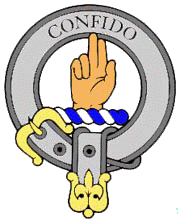


|
The Migration of the Boyds
from Scotland to Ireland
From "The Boyd Family" by Scott Lee Boyd, 1935.
The Boyds once held the destinies of Scotland in their hands according to a writer on the subject of Scotland in the Encyclopedia Britannica.
The main family by the name of Boyd in Scotland has been seated in Ayrshire and the most prominent branch was the Lords or Earls of Kilmarnock.
From Scotland they migrated to the north of Ireland, and many of the Boyd progenitors became known as Scotch-Irish.The reason for this migration was because King James I of England, who ascended the throne in 1603, offered the Scotch special inducements to
settle in Ulster,Ireland, where he owned two million acres comprising six counties. A company was formed to colonize Ireland, and the territory was divided into small farms and sold to the Scotch, among whom the Montgomery, Hamiltons and Boyds were the leaders. The men who undertook to seat large grants of these lands were called undertakers; among these undertakers were
listed Sir Thomas Boyd, Knt., James Hamilton, Earl of Aberdeen. George Hamilton. gent.. and Sir George Hamilton, Knt. Their lands fell in the precinct of Strabane. County of Tyrone. (Ref. The Scotch-Irish by Charles A. Hanna. 1902, Vol. 2. pages 511-512)
April 16, 1605, one of the greatest days in history, marked the day of the Great Charter and the Plantation of Ulster. It was a bright and sunny day in middle May,1605, which marked the landing of the first settlers from Scotland to restore the Provinces of Ulster, and to establish the type of men we now call the "Scotch-Irish."
"These families carried in their veins the strains of the blood of the Briton, the Norman. the Saxon, the Dane and added to these the Scotchmen who had come from Scotia Major or Ireland. They are enrolled on countless battlefields in both Europe and America." (The Cumberland Valley Hist..
by Dr. Geo. P. Donehoo, 1900. Vol. 1, page 31)
In forming new ties in their homes in northern Ireland. they did not mix or mingle with the native Irish families, but kept to themselves in their social life, in their intermarriages, and in their faith. Thus they preserved their true Scotch blood, though resident for generations in Ireland, and proudly clung to the appellation which designated them as of Scotch blood and traditions. The Irish Catholics rebelled against these
Protestant Scotch and on Oct. 23.1611. occurred the Irish Massacre.
In 1704 their trials became very great in Ireland. They were burdened with lawsuits, forbidden to educate their children in their own faith, and suffered so many other persecutions that a steady stream of migration set in to the extent that the counties of Down, Antrim, Armagh and Derry were literally emptied of these courageous folk, who were the Protestant inhabitants of this part of Ireland. From these counties came a constant stream of settlers to the Colonies in America. Most of them entered by way
of Pennsylvania and many of them made their homes there. Some went down the valley of Virginia and on into North Carolina, and some entered at Charleston. S. C.. and other ports. It is a common thing to find these immigrants joining friends and relatives who had preceded them in coming to the new world.
|